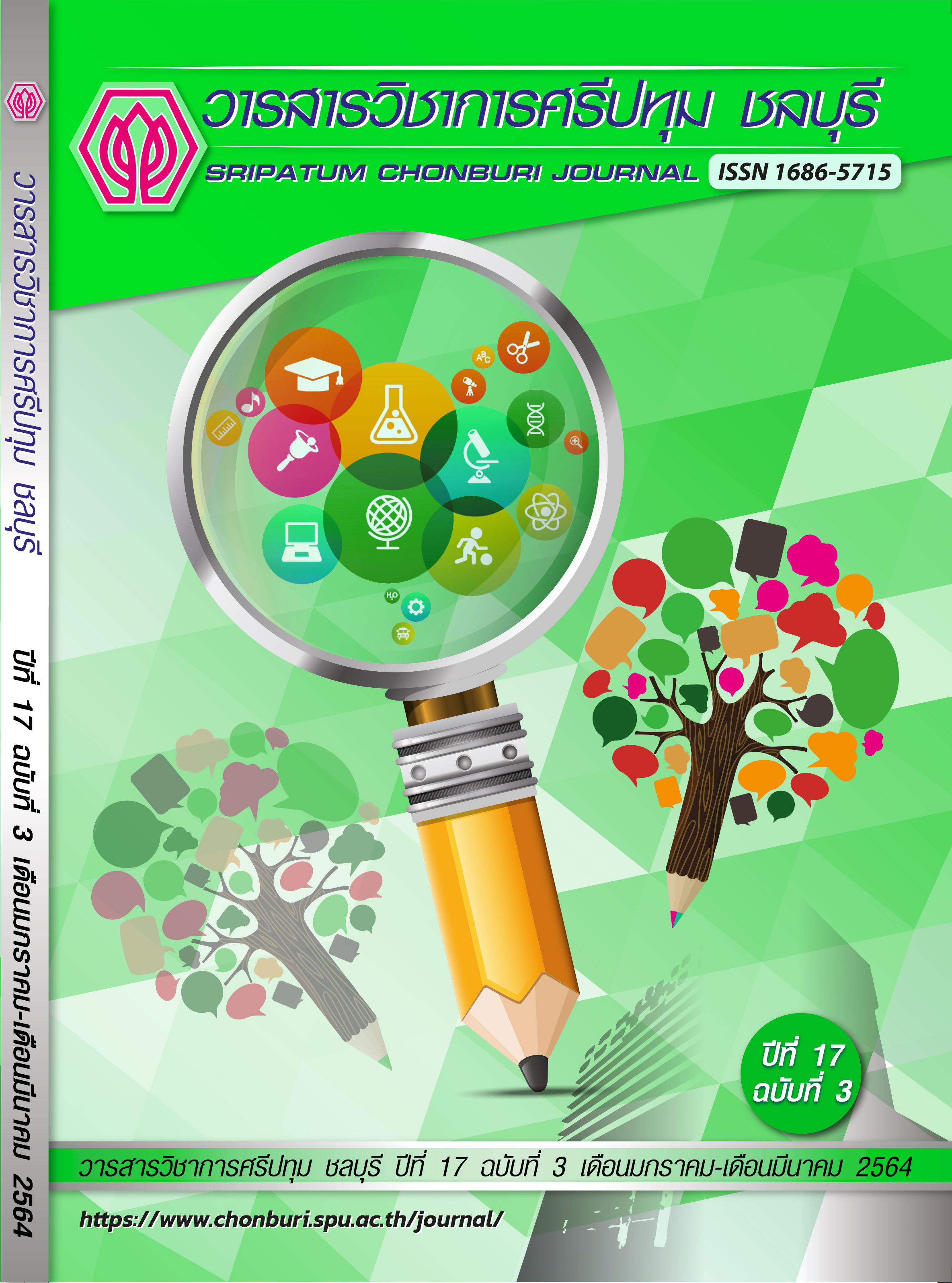THE CONDITION, PROBLEMS AND GUIDELINES FOR OFFICE OF THE NON-FORMAL AND INFORMAL EDUCATION FOR ATTENTION DEFICIT HYPERACTIVITY DISORDER (ADHD) LEARNERS IN LEARNING CENTERS UNDER NONTHABURI NON-FORMAL AND INFORMAL EDUCATION CENTER
Keywords:
non-formal education, informal education, attention deficit hyperactivity disorder (ADHD).Abstract
The purpose of this research was to study the conditions and problems of the management of non-formal education for ADHD students in learning centers under the Office of the Non-Formal and Informal Education. Nonthaburi and propose guidelines for the management of non-formal education for students with attention deficit hyperactivity in learning centers under the Office of the Non-Formal and Informal Education Nonthaburi Province. The participants were 86 teachers in learning centers under the Office of the Non-Formal and Informal Education Nonthaburi Province and 5 non-formal education experts. The research instruments were the condition and problem questionnaire and group discussion guidelines. Data were analyzed by frequency, percentage, mean, standard deviation and content analysis. The results of the research showed that the overall educational management conditions were at a medium level. Problems of educational management were problems in determining learning objectives and teaching methods suitable for ADHD learners. There were 5 part of guidelines for the management of non-formal education for students with attention deficit hyperactivity in school under the Office of the Non-Formal and Informal Education Nonthaburi: 1) environmental management, 2) teaching and learning, 3) assignments, 4) technical studies and time management, and 5) promote learning, the social skill development and behavior modification.
References
ณภพ วานิชสาร. (2556). บทบาทของครูการศึกษาพิเศษในการจัดการเรียนรู้สำหรับผู้เรียนที่มีความบกพร่องทางการเรียนรู้ที่มีภาวะสมาธิสั้นและอยู่ไม่นิ่ง ในโรงเรียนแกนนำจัดการเรียนร่วม. การค้นคว้าแบบอิสระศึกษาศาสตรมหาบัณฑิต สาขาวิชาการศึกษาพิเศษ, บัณฑิตวิทยาลัย มหาวิทยาลัยเชียงใหม่.
นฤมล ตันธสุรเศรษฐ์. (2556). หน่วยที่ 1 การจัดการศึกษานอกระบบและการศึกษาตามอัธยาศัย. ใน เอกสารการสอนชุดวิชา การจัดการการศึกษานอกระบบ หน่วยที่ 1-7 (หน้า (1)1- (1)36). นนทบุรี: สำนักพิมพ์มหาวิทยาลัยสุโขทัยธรรมาธิราช.
ผดุง อารยะวิญญู. (2542). การศึกษาสำหรับเด็กที่มีความต้องการพิเศษ. กรุงเทพฯ: แว่นแก้ว.
สำนักงานคณะกรรมการการศึกษาแห่งชาติ. (2545). พระราชบัญญัติการศึกษาแห่งชาติ พ.ศ. 2542 แก้ไขเพิ่มเติม ฉบับที่ 2 พ.ศ. 2545. กรุงเทพฯ: พริกหวานกราฟฟิค.
สำนักงานส่งเสริมการศึกษานอกระบบและการศึกษาตามอัธยาศัย. (2555). คู่มือการดำเนินงานหลักสูตรการศึกษานอกระบบ ระดับการศึกษาขั้นพื้นฐาน พุทธศักราช 2551 (ฉบับปรับปรุง พุทธศักราช 2555 (พิมพ์ครั้งที่ 2). กรุงเทพฯ: สำนักงานส่งเสริมการศึกษานอกระบบและการศึกษาตามอัธยาศัย สำนักงานปลัดกระทรวงศึกษาธิการ.
สุมาลี สังข์ศรี. (2558). หน่วยที่ 12 การจัดการศึกษานอกระบบและการศึกษาตามอัธยาศัยกับการศึกษาตลอดชีวิต. ใน ประมวลสาระชุดวิชาปรัชญาการศึกษานอกระบบและการศึกษาตามอัธยาศัย หน่วยที่ 8-15 (หน้า (12)1-(12)69). นนทบุรี: สำนักพิมพ์มหาวิทยาลัยสุโขทัยธรรมาธิราช.
Krejcie, Robert V., & Morgan, Daryle W. (1970). Determining sample size for research activities. Educational and Psychological Measurement, 30(3), pp. 607-610.
Downloads
Published
Issue
Section
License
บทความทุกบทความเป็นลิขสิทธิ์ของวารสารวิชาการศรีปทุม ชลบุรี



